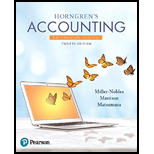
Concept explainers
Concept Introduction:
Depreciation can be defined as the cost of use or the cost of wear and tear of the assets used during the operations of the business.
There are many methods available for calculating depreciation of an asset. Some of them are –
• Straight-line method
• Double-declining method
• Units-of-production
These methods are discussed as under –
1. Straight-line method – In straight-line method, the depreciable cost of the asset is divided by the number of years of the life of the asset.
2. Double-declining method – In double-declining method, the assets are depreciated at twice the straight-line method rate, and the rate is applied on the beginning balance of the asset of the year.
3. Units-of-production method – In Units-of-production method, the depreciable cost of the assets is divided by the total Units-of-production during the life of the asset and multiplied by the number of units produced during the year.
Requirement 1
To prepare:
Depreciation Schedules for –
• Straight-line method
• Double-declining method
• Units-of-production method
Using the excel and excel formulas
Requirement 2:
To prepare:
A second depreciation schedule for double-declining method using EXCEL function DDB.
Requirement 3:
Minimum selling price for the asset to be sold at a profit of $ 6,000 using the three methods –
• Straight-line method
• Double-declining method
• Units-of-production method
Want to see the full answer?
Check out a sample textbook solution
Chapter 10 Solutions
Horngren's Accounting, The Financial Chapters (12th Edition)

 AccountingAccountingISBN:9781337272094Author:WARREN, Carl S., Reeve, James M., Duchac, Jonathan E.Publisher:Cengage Learning,
AccountingAccountingISBN:9781337272094Author:WARREN, Carl S., Reeve, James M., Duchac, Jonathan E.Publisher:Cengage Learning, Accounting Information SystemsAccountingISBN:9781337619202Author:Hall, James A.Publisher:Cengage Learning,
Accounting Information SystemsAccountingISBN:9781337619202Author:Hall, James A.Publisher:Cengage Learning, Horngren's Cost Accounting: A Managerial Emphasis...AccountingISBN:9780134475585Author:Srikant M. Datar, Madhav V. RajanPublisher:PEARSON
Horngren's Cost Accounting: A Managerial Emphasis...AccountingISBN:9780134475585Author:Srikant M. Datar, Madhav V. RajanPublisher:PEARSON Intermediate AccountingAccountingISBN:9781259722660Author:J. David Spiceland, Mark W. Nelson, Wayne M ThomasPublisher:McGraw-Hill Education
Intermediate AccountingAccountingISBN:9781259722660Author:J. David Spiceland, Mark W. Nelson, Wayne M ThomasPublisher:McGraw-Hill Education Financial and Managerial AccountingAccountingISBN:9781259726705Author:John J Wild, Ken W. Shaw, Barbara Chiappetta Fundamental Accounting PrinciplesPublisher:McGraw-Hill Education
Financial and Managerial AccountingAccountingISBN:9781259726705Author:John J Wild, Ken W. Shaw, Barbara Chiappetta Fundamental Accounting PrinciplesPublisher:McGraw-Hill Education





